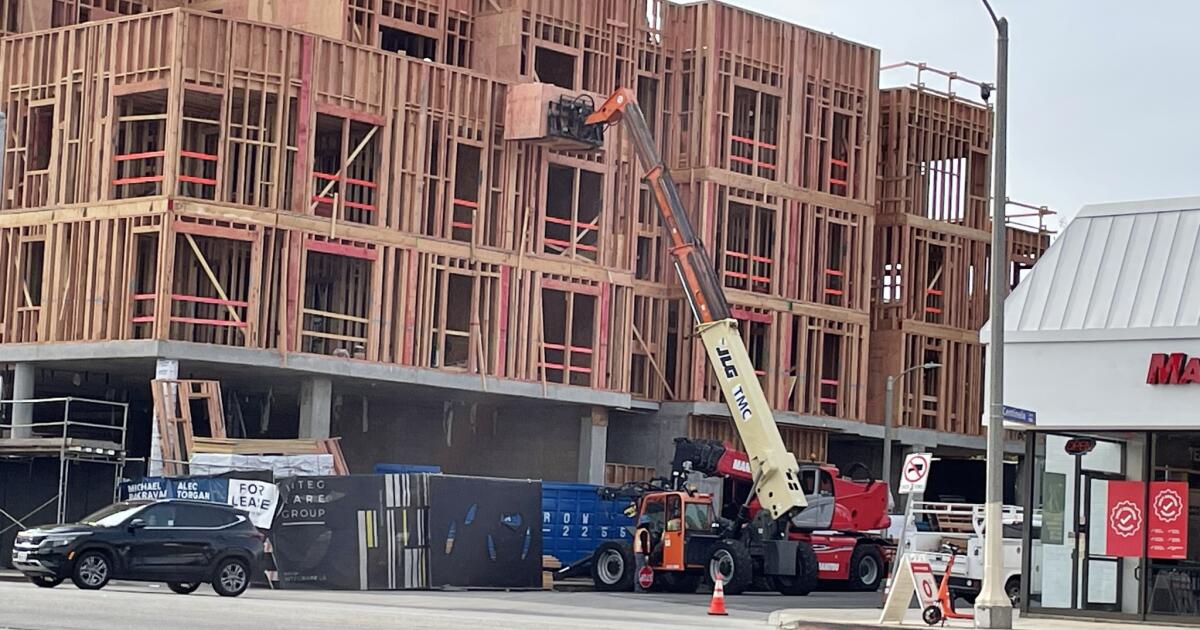The Unnecessary Cost of Road Widening in Los Angeles
A Legacy of Inefficient Street Development
Drive through enough neighborhoods in Los Angeles, and you might notice an odd phenomenon: In front of some newer apartment and commercial buildings, the street is slightly wider, and the sidewalk meanders around the indentation. If several properties on a block have been recently redeveloped, the street begins to look like a jigsaw-puzzle piece, widening and narrowing repeatedly.
A Legacy of Failure
That’s because new developments are often automatically required to dedicate part of their property to the city for road expansion — even if the road isn’t congested. In theory, these spot street widenings are supposed to improve traffic flow. In practice, because development happens sporadically, the parcel-by-parcel widenings end up taking out mature trees, parkways, and sidewalk space while providing little to no congestion relief.
The High Cost of Road Widening
Worse, the mandate needlessly drives up the cost of housing. In an analysis of L.A.’s street dedication ordinance published in 2016, UCLA urban planning professor Michael Manville surveyed several developers and estimated that the road widening cost them about $11,000 to $50,000 per unit.
A Regulation in Need of Reform
"I’ve studied urban regulations for 20 years, and this is probably the dumbest regulation I’ve ever encountered," Manville said recently.
A Step Towards Reform
Lawmakers are finally beginning to see spot street widening requirements for what they are: zombie regulations that don’t accomplish what was intended but are really hard to kill. The state Legislature started trying to slay the zombie this year. Gov. Gavin Newsom signed a bill by Assemblymember Wendy Carrillo (D-Los Angeles) to limit local governments’ power to require that housing developers widen the roads in front of their projects. Agencies may still require street dedications if they can demonstrate their necessity.
Recent Reforms
This month, the Los Angeles City Council approved reforms designed to greatly reduce the number of spot street widenings. Proposed two years ago, the reforms will limit the circumstances when roadway widening is required. For example, the Bureau of Engineering will no longer automatically mandate spot widening in established neighborhoods.
A New Era for Street Design
The council also adopted a recommendation to change the municipal code so that road and sidewalk changes are required only if they’re needed for good street design, environmental reasons or to improve the experience of pedestrians and cyclists as well as motorists.
Conclusion
Los Angeles needs more housing and safer streets. The city can’t afford to keep zombie regulations that defeat those goals on the books.
Frequently Asked Questions
Q: What is the purpose of spot street widening?
A: The purpose of spot street widening is to improve traffic flow.
Q: What are the consequences of spot street widening?
A: The consequences of spot street widening include the loss of mature trees, parkways, and sidewalk space, as well as increased costs for developers and potential harm to the environment.
Q: Why are spot street widening requirements being reformed?
A: Spot street widening requirements are being reformed to reduce the number of unnecessary road widenings and to prioritize good street design, environmental concerns, and the needs of all road users.


